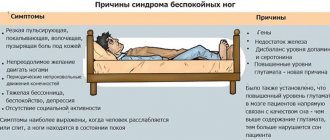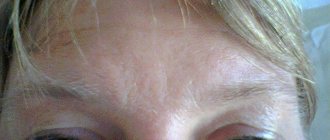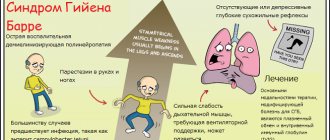The term asthenoneurotic syndrome refers to extreme muscle weakness and lack of energy. It is described as unusual fatigue without any effort. Reports indicate that this is a common cause, occurring in almost 30% of outpatient cases.
And 0.2-0.7% of these cases are attributed to chronic fatigue syndrome (CFS) or systemic exercise intolerance (SEID). CFS is a seriously debilitating disorder that can severely impact a person's quality of life, causing long-term illness.
Astheno-neurotic syndrome - causes, symptoms and treatment for depletion of the nervous system
Folk remedies are used as an auxiliary method of treating neurasthenia. Herbal sedatives can be used to help reduce irritability and other symptoms. However, it is important to remember that any folk remedies may have certain contraindications. Therefore, it is better to consult your doctor first.
- Herbal teas. They can be prepared from chamomile, peppermint, and lemon balm. You can drink them separately or prepare a collection. To prepare tea, take 1 tbsp. l. mixture in 250 ml of boiling water, leave for 10 minutes. You need to drink this tea 2-3 times a day, 150 ml. You can also add rose hips and oregano to this tea. It is recommended to drink herbal tea with honey.
- Motherwort. Helps reduce the severity of symptoms of neurasthenia. To prepare the product you need 2 tsp. pour 200 ml of boiling water over the raw material and leave for 8 hours. Strain and drink throughout the day. Similarly, you can prepare an infusion of St. John's wort.
- Hawthorn. 3 tbsp. l of hawthorn fruit, pour 250 g of boiling water and leave for half an hour. Drink 150 ml half an hour before meals three times a day.
- Celery greens. It is recommended to add it to salads and soups. You can also prepare an infusion, pour 3 tbsp. l. celery 250 g boiling water. Fresh dill is similarly useful for neurasthenia.
- Beetroot juice. Fresh beet juice is mixed with natural honey in a 1:1 ratio. You need to drink 100 g 3 times a day for a month.
- Valerian root. 1 tbsp. l of the product, pour 250 ml of boiling water into a thermos and leave overnight. Drink 70 g three times a day for 1-2 months.
How to treat neurasthenia depends on the degree of the disease. In mild cases, you can get by with home procedures that will reduce and eliminate the negative factors that caused the disease. In severe situations, drug treatment with supportive psychotherapy is necessary. Let's look at all the stages in more detail.
Treatment of neurasthenia at home comes down to measures that limit the impact of adverse causes. The workday schedule should be gentle, overtime work will have to be excluded so that the patient does not give all his best.
Rest, night and day, should be full in duration, calm and quiet, without unnecessary sounds that provoke attacks of irritation.
Nutrition needs to be balanced, based on the age and condition of the patient.
Exercise is useful for restoring poor health. For example, cycling or walking.
To relieve excess tension, it’s a good idea to master one of the relaxation techniques - relaxing the body. These are yoga, breathing exercises, water or massage treatments. Only in this case will success be achieved in self-treatment of neurasthenia.
It is important to know! For a neurasthenic, alcohol is contraindicated. It should be abandoned. Even a small dose of alcohol can provoke strong nervous excitement.
Treatment of neurasthenia in a hospital is carried out when a neurasthenic person cannot cope with his problem on his own. The main components of the rehabilitation course are adaptogens - natural or synthetic drugs that increase the body’s resistance to harmful environmental influences.
For increased fatigue, plant, animal or mineral based products are recommended. These are ginseng, eleutherococcus, lemongrass, ginger, sea buckthorn, honey and its derivatives (for example, apilak,) reindeer antlers, mumiyo, and others. To strengthen the nervous system and improve memory, B vitamins are prescribed intravenously.
In advanced forms of neurasthenia, when there is an increased feeling of anxiety, persistent sleep disturbance, the patient has abused alcohol, tranquilizers and antipsychotics are used. These could be, for example, rudotel and thioridazine.
Medication treatment is combined with psychotherapy sessions. Psychotherapeutic techniques can be different, for example, hypnotic influence, but the essence of all is the same: to set the patient up to give up his previous disordered lifestyle. The doctor tries to radically change the patient’s thinking and behavior so that relapse of the disease is impossible.
Some people with an overly sensitive psyche have a problem called astheno-neurotic syndrome. When this diagnosis is made, what is essentially astheno-neurotic syndrome and is it possible to treat it with folk remedies?
Causes
This neurological disease occurs in people who are said to take everything “to heart.” These are natures with an agile psyche, extremely receptive, sensitive and emotional, who are easily upset by even the slightest failure.
Often this personality type is an inherited genetic factor.
If a person with a predisposition to astheno-neurotic syndrome is daily in the most favorable circumstances and does not experience severe stress, then the disease may not manifest itself in any way.
- head injuries;
- severe chronic diseases (for example, thyroid disease or diabetes);
- intoxication, or poisoning of the body with various poisons, nicotine, frequent use of antibiotics, etc.);
- various social factors: stressful environment at work, problems in family life, conflicts with others;
- non-compliance with the rest and work regime, overwork.
Astheno-neurotic syndrome manifests itself in frequent and sometimes unexpected outbursts of anger, nervousness, and irritability.
In children, this is expressed by capriciousness, causeless crying, and even periodic voluntary hunger strikes.
At the third stage of astheno-neurotic syndrome, severe, prolonged depression occurs. The patient is completely indifferent to everything, constantly feels tired and is usually seriously ill for a long time, as the body loses the strength to resist viruses and infections. This is a very dangerous mental condition that requires mandatory treatment.
Help
Is it possible to treat astheno-neurotic syndrome with folk remedies?
- Organization of psychotherapy (an experienced psychologist will be required here).
- Regularly taking medications prescribed by your doctor.
- Establishing the correct daily routine.
Treatment with folk remedies in the case of this illness cannot replace the work of a doctor, but it can help her.
For a person with such a disease, it is necessary to create comfortable, favorable conditions, a comfort zone in which he can relax daily and restore mental strength.
A calm environment, absence of irritating factors, silence, healthy sleep, rest, relaxation - all this is very helpful in the treatment of this disorder.
It is also important to review what causes stress and, if possible, eliminate all this from the patient’s daily life.
13.06.2019
Astheno-neurotic syndrome refers to neurotic diseases and occurs due to exhaustion of the nervous system.
A distinctive feature of this disease is a feeling of extreme fatigue from everything and increased nervous excitability with a hint of irritability.
This illness is often confused with ordinary depression, vegetative-vascular dystonia or chronic fatigue. People with a mobile psyche who take events to heart and react emotionally to life circumstances are prone to this disease.
People with endocrine, infectious and cardiovascular diseases are also susceptible to asthenia.
Asthenia can affect any person, regardless of age and social adaptation.
Symptoms of the syndrome
Let's study the symptoms that characterize astheno-neurotic syndrome:
- excessive emotionality;
- sudden mood swings;
- lack of self-control;
- restlessness;
- impatience;
- intolerance;
- disturbed sleep;
- intolerance to strong odors, loud sounds, bright lighting;
- tearfulness, moodiness;
- constant irritation;
- headaches and dizziness;
- poor digestion.
Patients are prone to worry, exaggerating the situation, and exaggerating the significance of events.
During attacks of the disease, rapid heartbeat (tachycardia) and dizziness begin. Quite often, an attack of asthenia is accompanied by stabbing pain in the heart and lack of air.
However, in accordance with the type of nervous system, the manifestation of the syndrome can be either extreme excitability or inhibition.
In this case, an inadequate reaction to the event occurs, a kind of “stupor”, and a lack of control over the situation.
Such a person can go to doctors for months and complain about a non-existent illness. But suggestibility itself can lead to a real illness invented by such a “sick”!
Against the background of constant nervous abnormalities, disruptions in the functioning of the gastrointestinal tract begin. Patients may develop indigestion, suffer from heartburn, and belch after eating. When examining the gastrointestinal tract, the doctor, as a rule, does not detect any abnormalities.
Stages of the disease
Depending on the manifestation of the symptoms of the disease, the nature of the course of asthenia can be divided into three stages:
- increased excitability;
- sleep disturbance;
- depression.
These three stages of development of the disease do not occur without a reason, but are a consequence of a violation of the neurotic structures of the body.
The first stage is not perceived as a disease, but is considered a character trait. A tendency to tantrums and sudden mood swings is considered a character flaw or bad manners. Such uncontrollability of behavior is no longer a disadvantage, but a symptom of asthenia!
At the second stage, psychopathological processes are aggravated and astheno-neurotic syndrome is already pronounced. Fatigue occurs on its own, without physical or mental stress.
I am haunted by a feeling of “being overwhelmed”, I don’t want to work, my appetite decreases, my sleep is disturbed, and causeless headaches appear. Against the backdrop of this whole picture of the disease, immunity decreases, which provokes frequent colds. A sore throat may go away and then appear again!
The third stage is characterized by a decrease in vital interests, sometimes by an unwillingness to live.
Lethargy, apathy, desire for solitude, avoidance of vigorous activity, development of phobias and panic moods are characteristic signs of deep damage to neurotic structures. At this stage, a person falls into a state of prolonged depression, does not make contact, and avoids a wide circle of contacts.
- People with endocrine, infectious and cardiovascular diseases are also susceptible to asthenia.
- Asthenia can affect any person, regardless of age and social adaptation.
- Let's study the symptoms that characterize astheno-neurotic syndrome:
Stages of the disease
Symptoms
Neurasthenia is divided into three forms. Each has specific symptoms.
Hypersthenic neurasthenia
Initial stage. Most common. The main signs are irritability and excitability.
Symptoms:
- mood swings;
- loss of self-control;
- intolerance to loud sounds and crowds of people;
- decreased performance;
- fast fatiguability;
- absent-mindedness;
- inattention;
- sleep disorders;
- girdling headaches;
- general weakness;
- memory impairment.
Children constantly get sick in transport. Children suffer from bedwetting.
Irritable weakness
Intermediate stage, it is characterized by the following clinical picture:
- excessive excitement;
- irritability;
- emotional and physical exhaustion;
- short-term but frequent attacks of anger;
- tearfulness;
- unusual fussiness;
- too violent a reaction to noise stimuli, bright light, strong odors;
- uncontrollable emotions;
- inattention and absent-mindedness;
- memory problems;
- predominantly depressed mood;
- lethargy;
- apathy;
- sleep disorders;
- loss of appetite;
- disruption of the gastrointestinal tract (increased gas formation, constipation, increased stomach acidity, feeling of heaviness in the stomach);
- headache;
- cardiopalmus.
Hyposthenic neurasthenia
Last stage. The main indicators are weakness and exhaustion.
Manifestations:
- lethargy;
- apathy;
- drowsiness;
- depression;
- constant fatigue;
- Bad mood;
- anxiety;
- sadness;
- tearfulness;
- emotional instability;
- suspiciousness;
- nervous tic;
- convulsions;
- mood swings.
Teenagers are susceptible to phobias and panic attacks. Young children suffer from fears less often.
Diet
- Efficacy: therapeutic effect after 2 months
- Timing: constantly
- Cost of food: 1700-1800 rubles per week
A very important point is proper nutrition for neurasthenia. The diet should be enriched with vitamins and minerals, as well as all nutrients important for the body. It is recommended to include the following foods and dishes in your diet:
- whole grain cereals;
- honey, dried fruits;
- fresh vegetables and fruits - bananas, greens, cabbage, asparagus, citrus fruits, sea buckthorn, currants;
- liver;
- Brewer's yeast;
- Fish and seafood;
- cheese, dairy products.
The following should be completely removed from the menu:
- fat meat;
- sugar and confectionery;
- spicy dishes;
- nuts, seeds;
- sauerkraut;
- alcohol.
How to treat neurasthenia: doctor's advice
Neurasthenia is one of the most common diseases of the nervous system. Every day, the human psyche encounters millions of irritants; almost the entire adult population of the country suffers from overwork, physical inactivity, chronic lack of sleep or constant stress - the main causes of exhaustion of the nervous system and the development of neurasthenia.
Only a few think about the need for treatment and prevention of nervous diseases, preferring to work hard or simply not paying attention to their condition.
But timely treatment of neurasthenia not only helps to avoid the development of complications, but also increases a person’s performance, improves his well-being and mood.
The main thing is to be able to accurately diagnose this disease and know how to treat asthenic neurosis.
Neurasthenia or asthenic neurosis is one of the forms of neurosis that occurs when the nervous system is depleted. This condition can be caused by prolonged physical and mental stress, long working hours, poor working conditions, frequent stress, poor diet, and so on.
- Typically, neurosis develops when a person is exposed to several factors simultaneously, for example, in people who work a lot but do not follow a daily routine, suffer from physical inactivity and are forced to deal with difficult psychological situations every day.
- With neurasthenia, functional disturbances in the functioning of the nervous system occur, weakness, increased sensitivity to all types of irritants, a sharp deterioration in mood, as well as headaches, abdominal pain, joint pain, sleep and appetite disorders.
- There are 3 forms of neurasthenia:
- hypersthenic – stage 1 of the disease, it is characterized by increased mood lability, irritability, aggressiveness and decreased performance;
- irritable weakness - occurs when the nervous system is exhausted, the patient is still irritated by any sounds, noises from surrounding people, but there is no longer any strength left for aggression, and weakness, headaches, tearfulness and decreased mood increase;
- hyposthenic – a patient at this stage can be called a “typical neurasthenic”; there is constant weakness, lethargy, apathy, lack of interest in anything, constant pain in different parts of the body and other symptoms of somatic ill health.
All types of neurasthenia are characterized by pressing and squeezing headaches that occur in the evening; a person feels as if he is wearing something on his head - a symptom of a “neurasthenic helmet”, increased sweating, lability of blood pressure and a general deterioration of the condition.
Often, with neurasthenia, patients begin to visit doctors of various specialties, trying to find the cause of deterioration in well-being, but all studies conducted indicate complete physical health or minor deviations from the norm, which cannot in any way be the cause of such disorders.
Treatment
What to do when diagnosed with neurasthenia? Treatment of asthenic syndrome must be carried out as prescribed and under the supervision of a specialist; only a qualified doctor will be able to accurately assess the severity of existing nervous disorders, the possibility of developing complications and prescribe appropriate treatment.
Treatment at home is possible for mild forms of neurosis, if disturbances in the functioning of the nervous system are caused by improper work and rest patterns or excessive physical and neuropsychic stress. The main goal of treatment is to restore and stabilize the functioning of the nervous system and human health in general.
Treatment at home includes changes in lifestyle, work and rest patterns, nutrition, and the use of medications that improve general health. This treatment forms the basis of therapy for all types of neurosis and depression.
- Changing your daily routine. Work should take no more than 8 hours a day, sleep - 7-8 hours, physical activity and walks in the fresh air - 1-2 hours.
- Proper nutrition - exclusion of strong coffee, tea, sweets, hot seasonings, sauces and fast food. Only proper nutrition, enriched with all the necessary substances and elements, allows the nervous system and the entire body to recover from overload.
- Reducing stressful situations. No one will be able to completely avoid stress, but it is quite possible to minimize their harmful effects on the psyche.
- The ability to relax - you can restore the nervous system only by learning to relax and fully rest. Treatment of neuroses must necessarily include relaxation; methods of dealing with nervous tension can be different - from physical exercise to any hobby or interest. A prerequisite is the regularity of such activities and the positive emotions received in the process.
- Traditional methods - there are many quite effective and safe methods using herbs, berries, fruits and vegetables. The main thing is not to get carried away and be sure to consult your doctor about the safety of such treatment.
Sometimes with neurasthenia you cannot do without taking medications. This may be caused by excessive exhaustion of the nervous system, which is no longer able to recover on its own, and associated symptoms - increased anxiety, irritability, sleep and appetite disturbances.
To treat neurasthenia use:
- vitamins and drugs that improve the functioning of the nervous system - B vitamins, folic acid, vitamin C, pantocalcin, magnesium, iodine, glycine, piracetam, pantogam and so on;
- sedatives - treatment of neuroses begins with herbal sedatives, these can be tinctures of peony, valerian root, motherwort and their derivatives;
- antidepressants - in severe cases, more often in the treatment of neurasthenia in women, drugs are prescribed that improve mood and combat syndromes such as apathy, melancholy and fears. For this purpose, drugs are prescribed in courses of 2-4 months and the latest generation antidepressants are used: fluoxetine, sertraline, mianserin, Cymbalta, azaphene and others.
Psychotherapy
The most important method of treatment and prevention of any nervous diseases.
With neuroses, it is very important to understand what wrong actions and thoughts caused this condition. A variety of techniques can be used for this:
- rational psychotherapy - with this method, the doctor tries to help the patient evaluate his actions and motives logically, change the person’s distorted ideas about himself, those around him and reality;
- cognitive-behavioral – helps to find out exactly what thoughts cause “wrong” behavior, stress and nervous tension, and also looks for ways to cope with this;
- auto-training – the patient is taught methods to cope with stress, negative reactions that arise in response to certain stimuli, as well as methods of self-control and relaxation;
- body-oriented therapy - designed to help get rid of muscle tension, blocks, and excess tension. This method involves influencing the nervous system through the body, through feedback.
In addition to the standard treatment methods described above, it is recommended to use additional ones for neuroses. This can be music therapy, phototherapy, art therapy, sand therapy, yoga, meditation, aromatherapy, color therapy and any other method that allows you to relax and get rid of nervous tension.
psychiatrist Shaimerdenova Dana Serikovna
With asthenic neurosis, symptoms and treatment are determined depending on the form of mental disorder. Also, when selecting a treatment regimen, it is important to take into account the causative factor. Without analyzing the occurrence of the disease, it is impossible to achieve a positive result.
When treating a pathological condition, it is necessary to give preference not only to sedatives, but also to other methods. Treatment must be supplemented with lifestyle correction.
To achieve full recovery, the patient must follow a clear daily routine, sleep at least 8 hours (fall asleep before 10 pm) and consume more vitamins. The patient should also (if possible) change the environment.
Treatment of asthenic neurosis is based on identifying and eliminating the cause of the disease. Often, proper rest, a change of environment, normalization of the rhythm of work, sleep and wakefulness, and a decrease in psycho-emotional and physical stress allow you to completely get rid of the manifestations of the disease.
Treatment of asthenic neurosis is complex and involves the application of known efforts by the patient himself, since the first recommendation of therapy is to eliminate the causes that provoked the disease. It is in this matter that, in addition to drug support, you can do a lot on your own.
So, everyone can identify the cause of physical or mental fatigue, irritability and nervousness. If the patient is busy with an overwhelming job with constant pressure and hassle, it is worth simply changing it to a simpler and calmer one, which requires vacation and mandatory weekends for proper rest.
If a person falls ill due to constant conflicts and turmoil in the family, it is worth reviewing and adjusting the style of relationships between its members in order to create comfortable conditions at home that are conducive to recovery.
General recommendations for neurotic disorders are regular walks in the fresh air, physical education or sports (for example, yoga or swimming), which strengthen not only the nervous system, but the entire body.
General (regime) activities
General measures are necessarily included in the treatment of cerebral asthenia in a child, regardless of the causes of its occurrence, these include:
- walks in the fresh air, which improve the saturation of brain tissue with oxygen;
- sufficient sleep, the duration of which should correspond to the age norm, not less than 8 hours, with the most optimal sleep being from 22.00 to 6.00;
- balanced balanced diet with sufficient intake of vitamins in the body;
- hardening the child’s body, taking a contrast shower;
- creating a positive psychological mood, reducing negative emotions and psychological stress, periodically changing impressions (travel, family outings).
Following general recommendations will also prevent the child from re-developing neurasthenia in the future.
Treatment of astheno-neurotic syndrome with drugs. Treatment of neurasthenia at home
13.06.2019
Causes of the disease
The reasons why astheno-neurotic syndrome occurs:
- high load on the nervous system: stress, mental strain;
- disruption of brain metabolic processes;
- poisoning and intoxication with alcohol, drugs or nicotine;
- inflammation of the cerebral cortex;
- chronic kidney and liver diseases;
- thyroid diseases;
- lack of vitamins;
- heredity.
Among the various causes of asthenia, the social factor stands out. Mental and mental stress associated with failures of social adaptation and everyday troubles easily provokes disorders of an asthenic nature.
- This is especially true for people with a very flexible psyche.
- The desire to move up the career ladder can lead to damage to neurotic structures if a person deprives himself of sleep and rest.
- And if increased psychogenic stress is accompanied by chronic kidney disease or hormonal disorders, then it will not be possible to avoid the acute form of asthenia.
The causes of astheno-neurotic syndrome in children are:
- suffered hypoxia at birth;
- birth injuries;
- bacterial and viral infections complicated by neurotoxicosis;
- underdevelopment of the central nervous system;
- malnutrition.
Symptoms of the disease are expressed in hysterics, causeless crying, and constant whims. The appearance of asthenic disorders in childhood and adolescence is caused by an immature nervous system and inferior neurotic structures.
Viral diseases that occur with convulsions, disorders of consciousness and other manifestations of neurotoxicosis can also cause anamnesis.
Also, the appearance of asthenic disorder can be influenced by the place of residence. For example, in the Arctic, the constant lack of solar insolation negatively affects the development of the child’s body and psyche.
Diagnosis of asthenia
Only a qualified physician can diagnose asthenia. The examination reveals the following points:
- heredity;
- past illnesses;
- surgical interventions;
- injuries;
- sleep pattern;
- accommodations.
Based on a detailed survey, a clinical picture of the disease is drawn up.
Possible consequences of the disease
If the disease is left to take its course or the cause is not eliminated, serious psychological and physical consequences are possible.
Children suffering from astheno-neurotic syndrome are at risk of hormonal disorders. They are at increased risk of developing stomach ulcers. Adolescents face puberty disorders. People suffering from reproductive dysfunction are more likely to have been exposed to neurasthenia in childhood.
As for psychological problems, advanced asthenic neurosis leads to a lack of ability to adapt to society and establish contacts with others.
The child suffers from constant depression, cannot study normally, and is visited by suicidal thoughts.
Only adults are able to cope with neurasthenia on their own. Kids can't do this. Young patients need timely assistance from qualified specialists and parents.
Features of the development of asthenic neurosis
For this type of syndrome, situations and signs have been identified that contribute to the deterioration of the condition and can become the onset of a mental disorder:
- a number of specific character traits in a person;
- negative factors that constantly affect the physical state and psyche;
- the body cannot recover despite a variety of methods of natural and prolonged rest;
- exhaustion of the nervous system;
- negative or prejudiced attitude of others and close relatives;
- rivalry and competition at work;
- choosing an educational institution at the insistence of parents and, as a result, obtaining an unsuitable profession;
- endocrine diseases, hormonal imbalance;
- consumption of alcohol, drugs;
- obesity, sedentary lifestyle.
Consequences and complications
With a prolonged course of the disease, nervous processes are depleted, which leads to the development of a number of diseases. Often patients with neurasthenia complain of insomnia, chronic headaches and intestinal manifestations. They may develop eating disorders (anorexia, bulimia, etc.). Possible phobias, obsessive thoughts, paresthesia. In women, libido may decrease, and in men, potency may decrease.
With neurasthenia, it is difficult for a person to maintain social connections. Over time, psychological problems worsen and against this background, severe mental illness can develop.
Signs of neuroses in men
The symptoms of neurasthenia are numerous, but among them there are certain signs by which doctors diagnose the pathology.
Gradually, these symptoms of increased irritability are replaced by weakness and rapid exhaustion. It becomes difficult for the patient to concentrate, he becomes whiny and touchy, anxious, dissatisfied with himself and others. At work, such a person begins to experience incredible difficulties: he cannot concentrate on his work, he is distracted by the slightest sounds, the light hurts his eyes, etc.
In addition, asthenic neurosis is accompanied by physiological symptoms: headaches, sleep disturbances (insomnia or excessive drowsiness), autonomic disorders (digestive and genitourinary system disorders, tachycardia, severe sweating, weather dependence).
If you are diagnosed with neurasthenia, treatment should begin as soon as possible. If the disease is advanced, the disorders become chronic and it will be much more difficult to treat this disease in the future.
It is worth noting that the signs of neurasthenia in women are not uniform, and therefore it is quite difficult to identify the main ones. If we consider the symptoms of the disease, then the first thing you need to pay attention to is the person’s mental state. Often in this case it is observed:
- quick change of mood,
- lack of joy
- women with neurasthenia always don’t like something,
- everything is indifferent
- I don't want to do anything.
In men, the signs of neurasthenia are more associated not with the psychological, but with the functional aspect. These include increased irritability, weakness and constant aching pain in the muscle area.
According to medical statistics, it is men who often develop the second form of the disease, which is chronic in nature. Cholerics and those who actively engage in sports are more susceptible to this.
In men, the disease manifests itself as follows:
- inability to concentrate on something for more than 5-10 minutes;
- increased physical and psychological fatigue;
- frequent and prolonged headaches;
- signs of nervous weakness;
- the man experiences difficulties with the simplest, at first glance, logical operations.
Regardless of the stage of the pathology, asthenic neurosis is characterized by:
- asthenic-hypochondriacal and depressive-hypochondriacal complaints;
- sleep disturbances with superficiality, difficulty falling asleep or frequent awakenings;
- increased tendon reflexes, eyelid tremor and some other neurological signs;
- increased sensitivity (hyperesthesia) of the skin;
- sexual dysfunction in the form of decreased libido, erectile dysfunction, impotence, vaginismus, etc.;
- patient-perceived cognitive decline.
Forecast
This is the name of one of the mental disorders that appears as a result of excessive fatigue and nervous exhaustion. Neurologists also call the disease irritable fatigue, since such a child is both tired and excited. The disease belongs to the category of neuroses, it is typical for both adults and children. But in the latter it has its own special symptoms.
The etiology of astheno-neurotic syndrome (ANS) in children can be acquired or congenital. The acquired form is often a consequence of injuries to the child’s cervical spine and can appear after a period of severe heavy loads, regular worries and worries.
If we talk about the congenital form, then ANS can bother a child up to 3-4 years old. As neurologists note, in the development, treatment and further prognosis of the disease, much depends on the type of nervous activity of the child, that is, temperament. There are four of them: sanguine, phlegmatic, choleric and melancholic. And children with the latter type of nervous activity are more prone to ANS.
In any case, a child with ANS needs the help of a psychologist. Parents of a baby or teenager also need it to develop communication skills with such a child and relationship tactics. For a neurologist, the degree of impairment of nervous functions plays an important role in determining the prognosis for a patient. If the astheno-neurotic syndrome in a young patient is isolated and uncomplicated, then the prognosis is favorable.
Usually treatment is prescribed in courses, they are changed once every three to four months. And the success of the courses and, accordingly, the forecasts largely depend on the parents’ attitude towards the child’s illness, their patience and psychological stability.
Most often, asthenoneuratic syndrome occurs in a chronic form. But if at least minimal treatment of the pathology is absent, serious complications can arise:
- Stroke;
- Heart attack;
- Stomach ulcer and exacerbation of gastrointestinal diseases;
- Hormonal imbalances.
Also, in the absence of adequate therapy, depression may occur, which sometimes even leads to suicide. In the initial stages of the disease, a person is still able to help himself.
Complications of asthenia in children can lead to malfunctions of the thyroid gland, and, consequently, to disorders in the reproductive system. In adults, problems with reproductive function may occur.
Types of VSD
Vegetative-vascular dystonia can be expressed by characteristic features:
- Hypertensive type. It manifests itself in an unstable increase in pressure, which does not affect general well-being. But some may still experience headaches, apathy and weakness.
- Hypotonic type. With this type, there is a decrease in pressure, reaching 90 mm Hg. Art. The consequence of low blood pressure is dizziness, apathy, and increased sweating.
- Mixed type. With this type, the pressure can rise and fall, there is a pain syndrome behind the sternum in the heart area, the contraction of the heart muscles increases and decreases, replacing each other. Dizziness and weakness are also common symptoms.
- Cardiac type. With this type, complaints of pain in the heart muscle and chest area may be noted, which are in no way related to physical activity. There is a disturbance in the rhythm of heart contractions, which does not require treatment or medication.
Psychological characteristics of children with ANS, rehabilitation
Children with astheno-neurotic syndrome are nervous and aggressive. They immediately stand out among others in the children's group. These children are conflictual, inclined to offend others and speak in a raised voice.
Such children often cry, scream, protest against basic habitual actions, for example, for no reason they can refuse food, even their favorite ones, and throw a tantrum both at home and in kindergarten.
Teachers in preschool institutions and at school register such children, psychologists work with them, and if parents comply with all the appointments of neurologists, follow the advice of psychologists, and behave with restraint towards the child, then complex therapy gives its results. You just need to keep in mind that ANS cannot be cured in one month.
The most important thing during the rehabilitation period is to avoid nervous tension and conflict situations, and continue to maintain an optimized daily routine and exercise.









